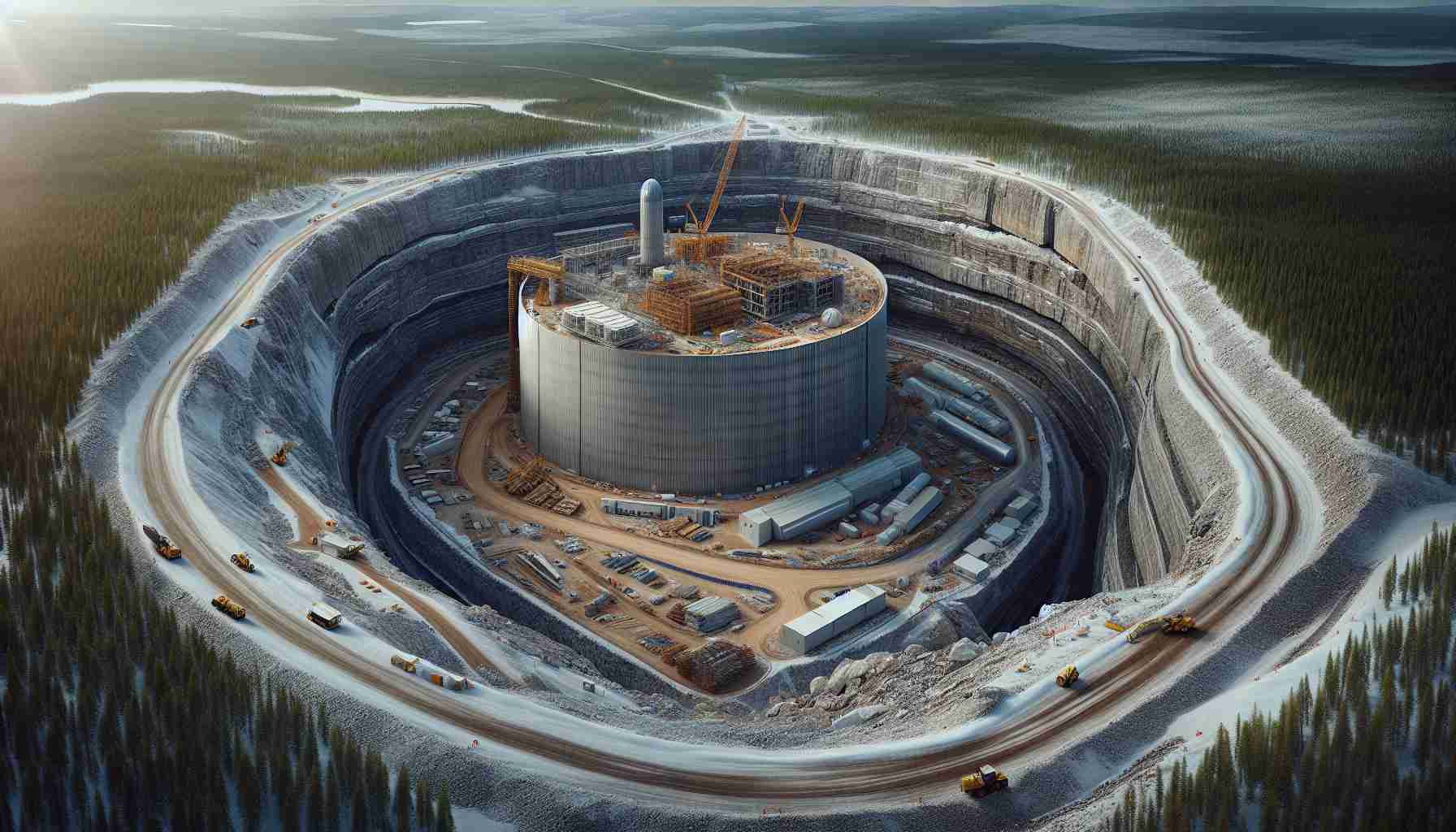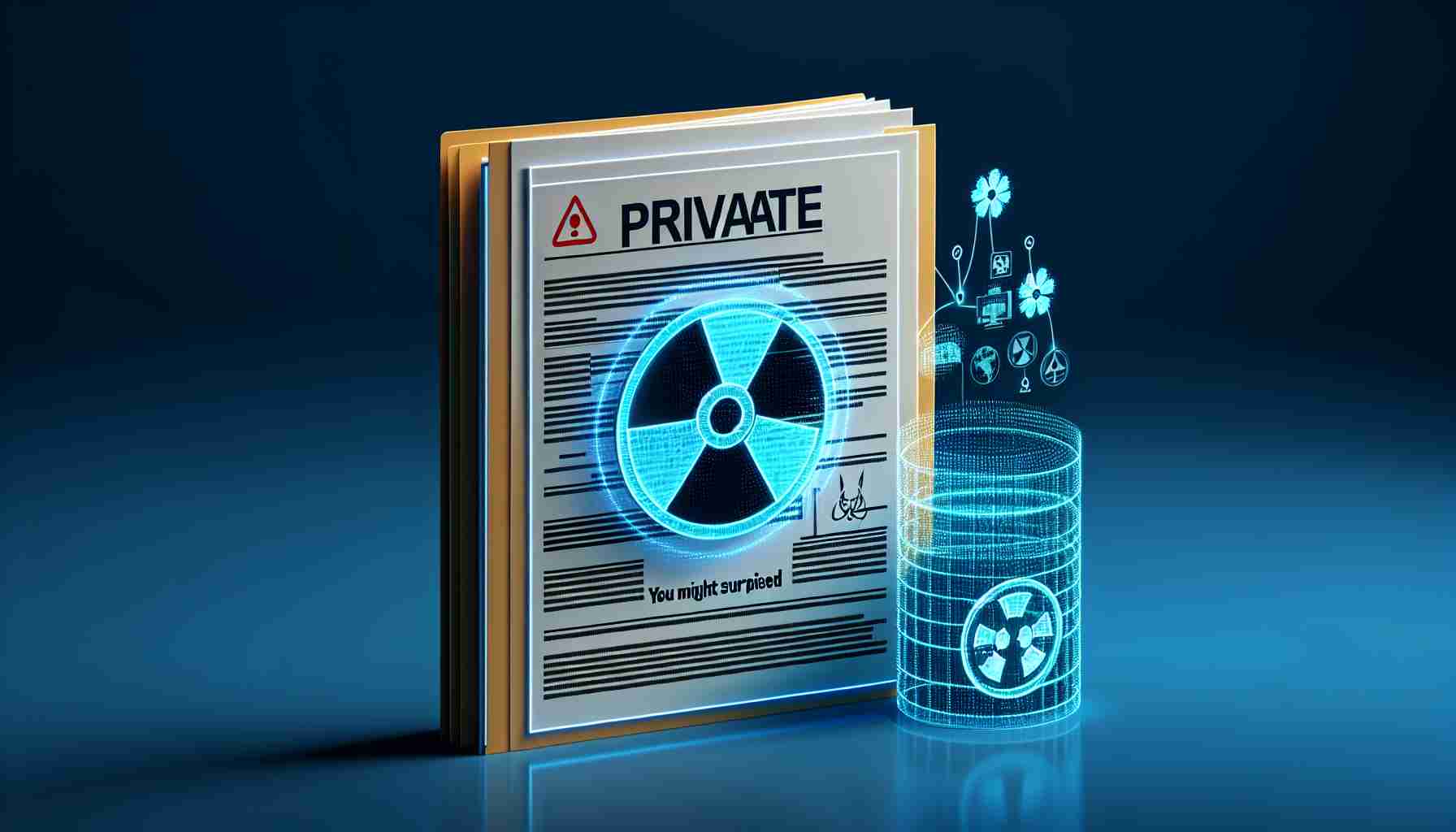Sweden has officially commenced the construction of its deep geological repository (DGR) for spent nuclear fuel (SNF), marking a groundbreaking achievement after four decades of dedicated research and development. This new facility, located at Forsmark in Östhammar Municipality, is the second of its kind in the world and is projected to span a decade-long construction phase.
This ambitious underground project will extend 500 meters into ancient rock, capable of securely holding 12,000 tonnes of spent nuclear fuel within 6,000 copper canisters. The entire repository will comprise an intricate network of tunnels totaling over 60 kilometers, encapsulated in protective bentonite clay. The site will occupy an area equivalent to 44 soccer fields at the surface.
Preparatory work is set to begin with essential infrastructure improvements, including a rock mass storage facility and a water treatment plant. This first stage will last two years before the construction of the underground sections commences.
Founded in the 1970s, Svensk Kärnbränslehantering AB (SKB), the company behind this effort, has persevered through years of development and site selection processes, ultimately receiving government approval in early 2022 to move forward. Sweden’s energy policy has shifted to support nuclear power expansion, envisioning two new large-scale reactors by 2035.
As Sweden pioneers in sustainable energy solutions, its commitment to nuclear energy is clearer than ever, setting a precedent for future generations.
The Broader Impact of Sweden’s Nuclear Waste Repository
Sweden’s decision to construct its deep geological repository (DGR) for spent nuclear fuel (SNF) carries profound implications for society and culture. As the second facility of its kind globally, it represents a significant advancement in how nations handle nuclear waste, addressing longstanding public concerns about safety and environmental integrity. This move may encourage other countries, especially those with nuclear programs, to reevaluate their waste management strategies, potentially leading to an international shift towards more responsible approaches to nuclear energy.
The global economy stands to be affected as well, particularly in the energy sector. With nuclear power being a less carbon-intensive form of energy, Sweden’s commitment to expanding its nuclear capabilities—envisioning two new reactors by 2035—could accelerate the transition to a decarbonized energy grid. This could inspire investments in nuclear technology and influence global energy market dynamics, underscoring nuclear power’s role in achieving climate goals.
However, the environmental effects are dual-faceted. While a deep geological repository ensures the safe containment of hazardous waste, the long-term ecological implications of such a facility must be carefully monitored. Future trends may point towards increased collaboration in international nuclear waste management practices and a concerted effort to integrate sustainable energy policies that encompass the entire lifecycle of nuclear power, from generation to waste disposal.
As Sweden sets a precedent in sustainable energy solutions, the long-term significance of its DGR project rests not only in its technological innovation but also in its ability to foster international dialogue and collaboration on nuclear energy’s future.
Sweden Breaks Ground on Revolutionary Nuclear Waste Repository: A Glimpse into the Future of Energy Storage
Sweden’s Deep Geological Repository for Spent Nuclear Fuel
Sweden has embarked on an ambitious project, officially commencing the construction of its deep geological repository (DGR) for spent nuclear fuel (SNF) after four decades of research and development. Located at Forsmark in Östhammar Municipality, this facility is the second of its kind globally and is expected to be completed over a decade-long construction phase.
Specifications and Design
The DGR will extend approximately 500 meters into ancient rock, designed to securely house 12,000 tonnes of spent nuclear fuel within 6,000 copper canisters. The repository itself will feature an intricate network of tunnels totaling over 60 kilometers, all encapsulated in protective bentonite clay that enhances safety and isolation from the environment. The surface footprint of the entire facility will cover an area equivalent to 44 soccer fields, ensuring a minimal impact on the surrounding landscape.
Project Timeline and Initial Preparations
The first stage of the construction involves essential infrastructure enhancements, including a rock mass storage facility and a water treatment plant. This preparatory work is set to last for two years before the underground construction phases begin. Such thorough planning demonstrates Sweden’s commitment to safety and environmental stewardship in the handling of nuclear waste.
Key Players in the Initiative
Svensk Kärnbränslehantering AB (SKB), the company responsible for this monumental effort, has navigated the complexities of site selection and government approval since its founding in the 1970s. After years of extensive research and development, the Swedish government granted final approval for the DGR in early 2022, allowing this vital project to advance.
Sweden’s Energy Policy Trends
Sweden’s commitment to nuclear energy is increasingly clear, highlighted by the country’s changing energy policies aimed at expanding its nuclear power capacity. The nation envisions the construction of two new large-scale reactors by 2035, supporting its goal of sustainable energy solutions. This forward-thinking approach positions Sweden as a leader in nuclear energy utilization, balancing greenhouse gas emissions reduction with reliable power generation.
Pros and Cons of Nuclear Energy in Sweden
# Pros:
– Environmental Impact: Lower carbon emissions compared to fossil fuels.
– Energy Independence: Reduces reliance on imported energy sources.
– High Efficiency: Nuclear plants produce a large amount of energy from small fuel volumes.
# Cons:
– Nuclear Waste: Long-term management of radioactive waste remains a challenge.
– Public Perception: Gaining public trust in nuclear safety can be difficult.
– Initial Costs: High investment required for construction and safety measures.
Future Insights and Innovations
As Sweden progresses with the DGR, the project may set new benchmarks for global nuclear waste management practices. Innovations such as improved canister designs using advanced materials or innovative monitoring systems within the repository could enhance safety and efficiency. Moreover, the successful execution of this project could influence other countries facing similar challenges with nuclear waste storage.
Conclusion
Sweden’s construction of the deep geological repository for spent nuclear fuel marks a significant milestone in the nation’s energy strategy and global nuclear waste management. As the project unfolds, it may serve as a model for other countries, ensuring safety and sustainability in the management of nuclear energy resources.
For more information on Sweden’s energy initiatives, visit Svensk Kärnbränslehantering AB.
The source of the article is from the blog hashtagsroom.com



